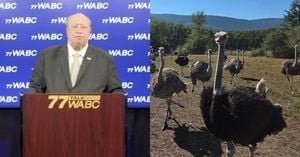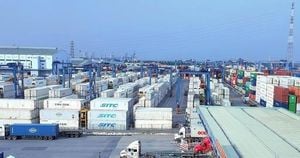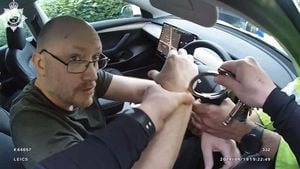San Juan, Puerto Rico, has always been a city of music, but this summer, the rhythm pulsing through its streets has a distinctly global beat. That beat belongs to Bad Bunny, the Puerto Rican superstar whose concert residency, No Me Quiero Ir de Aquí, is turning the island into a cultural and economic powerhouse. From mid-June through mid-September 2025, Bad Bunny’s residency has not only drawn hundreds of thousands of fans, but also delivered a windfall to Puerto Rico’s fragile economy, all while putting the spotlight on the island’s vibrant culture and local businesses.
On August 14, 2025, the star power at Bad Bunny’s concert reached a fever pitch when Oscar-winning actors Penélope Cruz and Javier Bardem were spotted in the crowd, dancing together before joining the reggaeton icon on stage. In a video shared by Cruz on Instagram, she’s seen swaying closely with Bardem as Bad Bunny, whose real name is Benito Antonio Martínez Ocasio, performs beside them. Cruz’s caption was simple, but effusive: “Gracias Benitoooooooo. Impresionante!!” The actress, 51, and Bardem, 56, have been married for 15 years and share two children, Leo and Luna. Despite being one of Hollywood’s most private couples, their chemistry was on full display as Cruz introduced Bad Bunny’s 2025 track “Voy a llevarte pa PR” (“I’m Going to Take You to Puerto Rico”) to raucous applause.
But the magic of the residency extends far beyond the VIP section. According to Discover Puerto Rico, the concerts have generated nearly $200 million through packages that include tickets and hotel stays. More than 48,000 hotel nights have been booked since the residency began, and on July 27, 2025, hotel reservations were 10% higher than the same date last year. Short-term rentals have also seen a surge, up 42% in August compared to the previous year and a staggering 61% higher for September. The numbers are impressive, but the stories behind them are even more compelling.
Fans have traveled from around the world for a taste of the Bad Bunny experience. Eddie Villanueva and his son, both sharing the same name, flew in from Switzerland with a $5,000 budget, eager to soak up every facet of the superstar’s home turf. Their itinerary included a $40 tour of Bad Bunny’s hometown, Vega Baja, where visitors can slip into borrowed red vests at the Econo supermarket where Bad Bunny once worked. Delza Vélez, the head of HR at Econo, fondly recalled, “He always liked going to the parking lot to gather the shopping carts because it seemed that he felt free there and would sing.” It’s a slice of humble beginnings that fans now flock to see, snapping photos and listening to stories of the artist’s early days before he quit in 2016 and left a note for Vélez. Just two years later, Bad Bunny’s debut album launched him into stardom.
The residency’s impact has rippled through nearly every corner of Puerto Rico. A whopping 25,000 concert packages were sold in just one day, and flight bookings from the U.S. mainland to San Juan’s main international airport jumped nearly 7% from July to September compared to last year, according to the aviation analytics company Cirium. The influx comes at a time when tourism typically dips ahead of hurricane season, offering a much-needed boost to the local economy.
What sets this residency apart isn’t just the music—it’s the deep dive into Puerto Rican culture that fans are embracing. Tourists aren’t content with just the concert; they want the full Bad Bunny pilgrimage. In Vega Baja, they visit his former high school, the supermarket, and even the church where he served as an altar boy. One mural, painted on the side of an agricultural supply store, has become a must-see spot for selfies and souvenirs. For $20, visitors can buy caps emblazoned with “PR” for Puerto Rico, a small but meaningful way to support local businesses.
Nonprofits and entrepreneurs have seized the moment, launching tours that highlight the island’s rich traditions. G8, a nonprofit aiding San Juan’s impoverished communities, introduced a $25 guided bike tour called “I should have biked more”—a playful nod to Bad Bunny’s latest album, “Debí Tirar Más Fotos” (“I Should Have Taken More Photos”). Another nonprofit, Acción Valerosa, teamed up with Los Pleneros de la Cresta, a music group that plays at Bad Bunny’s shows, to create the “Café con Ron” tour. This journey takes tourists to Ciales, a coffee-producing town in the central mountains, and includes a workshop on Puerto Rican traditional music. The proceeds will help transform a former casino into a community center, showing how fandom can fuel civic good.
Even university students are getting in on the action. Julietta Dasilva, a longtime fan flying in from Denver for the August 29 concert, opted for a $45 tour led by a local student. “I want to do it right,” she said, choosing authenticity over commercialized options. It’s a sentiment echoed by many visitors, who are now exploring far-flung towns like Cabo Rojo—home to the southernmost point of the island and a dock painted with the Puerto Rican flag featured in a Bad Bunny video. Ángel Rodríguez, owner of the Boquemar hotel in Cabo Rojo, reported a 7% uptick in customers this summer, crediting the singer for putting lesser-known landmarks on the map.
The residency’s influence has even extended to Puerto Rico’s unique wildlife and cuisine. Some visitors have asked to see the Puerto Rican crested toad, the island’s only indigenous toad species, after it appeared in one of Bad Bunny’s videos. While the elusive amphibian remains hard to spot, the curiosity it inspires speaks to the artist’s ability to draw attention to all facets of his homeland. Restaurants like La Casita Blanca have seen business boom after Bad Bunny was photographed dining there, with servers describing the crowds as “complete bananas.” As visitor Vicky Galvez put it, “I did shop local, and that was great.”
Ricardo Cortés Chico, a spokesperson for Discover Puerto Rico, summed it up best: “We can argue that they’re the prettiest, but they’re beaches. What makes us unique is the culture. No one can steal that.” The residency has shifted the focus from sand and surf to the people, places, and traditions that make Puerto Rico special. Wilson Santiago Burgos, founder of the travel platform Mochileando, noted that even though Bad Bunny has criticized the island’s main political parties, the government and private sector alike have embraced the economic and cultural boom. “People are starting to consume, to produce things strictly from Puerto Rico,” he said. “This is the homeland that I love … I invite you to get to know it.”
With an estimated 600,000 people expected to attend the residency, the summer of 2025 has become a defining moment for Puerto Rico. The island’s global profile has soared, its economy has been invigorated, and its culture has taken center stage—thanks to a local son who never forgot his roots and the fans who want to experience them for themselves.




